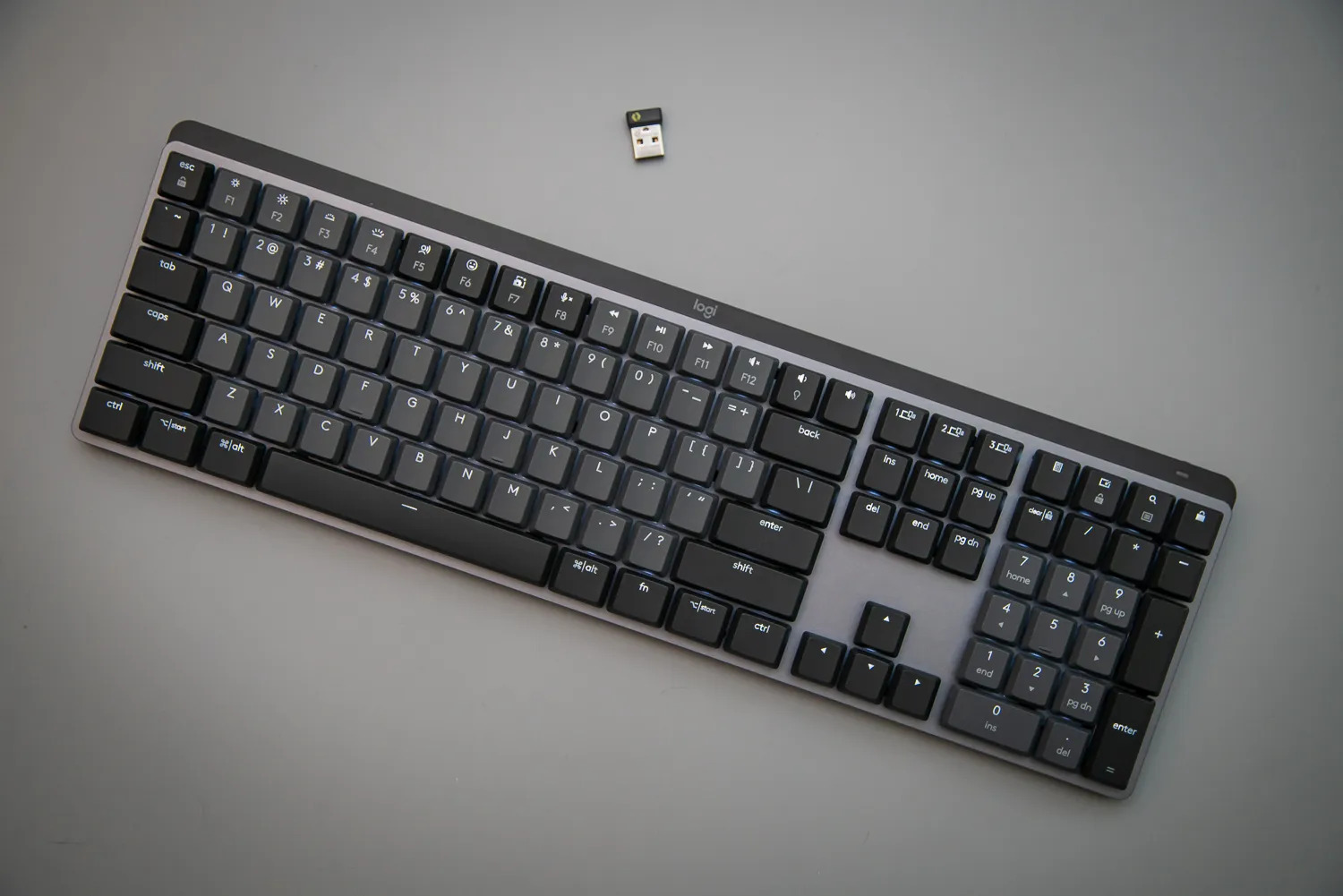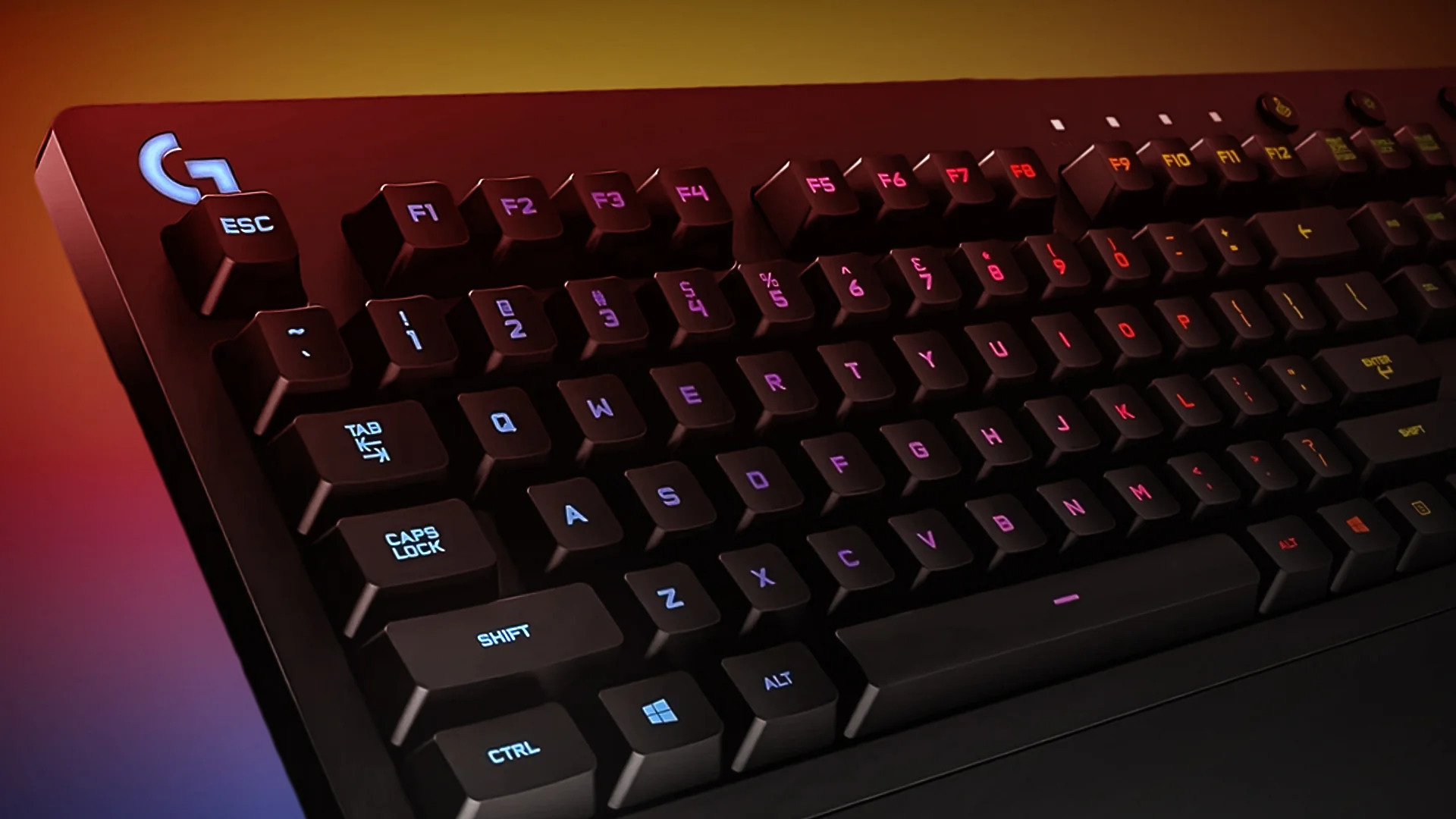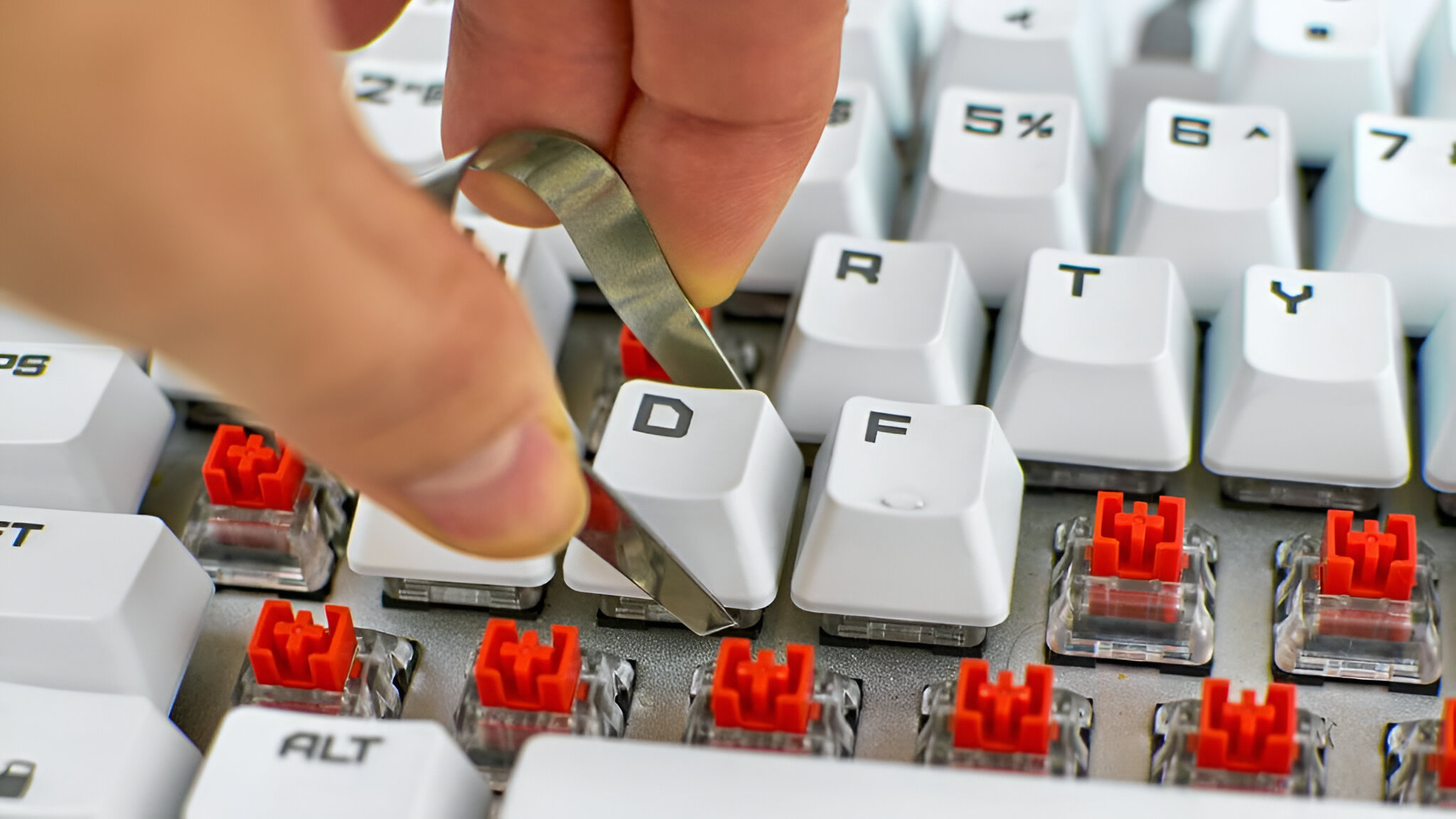Introduction
Welcome to the world of technology, where every device plays a significant role in our daily lives. One such device that we often overlook is our keyboard. Whether you’re typing up an important document, playing a video game, or simply browsing the web, having a functional and up-to-date keyboard is crucial for a smooth and efficient user experience.
Keyboard drivers are the software components that enable communication between your keyboard hardware and your operating system. They ensure that all your keystrokes and commands are accurately interpreted and executed. Over time, keyboard drivers may become outdated or corrupted, leading to various issues such as lagging input, unresponsive keys, or even complete keyboard failure.
To ensure optimal performance and functionality, it is essential to keep your keyboard drivers up to date. Regularly updating your drivers can enhance compatibility, improve performance, and fix any bugs or glitches that may have been present in older versions. In addition, updating your keyboard drivers can also provide access to new features and functionality, enhancing your overall user experience.
This article will guide you through the process of checking for and updating your keyboard drivers on Windows operating systems. We will explore multiple methods, including using Windows Device Manager, visiting the manufacturer’s website, and utilizing third-party driver update software. Whether you’re a novice computer user or an advanced techie, we’ve got you covered!
So, without further ado, let’s dive into the world of keyboard driver updates and ensure that your keyboard performs at its best!
Why Do You Need to Update Keyboard Drivers?
Updating your keyboard drivers is essential for several reasons. Let’s explore some of the key benefits and reasons why keeping your keyboard drivers up to date is important:
- Improved Compatibility: As technology evolves, operating systems and software applications are regularly updated. By updating your keyboard drivers, you ensure compatibility with the latest software versions, making sure that your keyboard functions seamlessly with all your applications.
- Bug Fixes and Performance Enhancements: Driver updates often include bug fixes, addressing issues that may have been present in previous versions. Updating your keyboard drivers can resolve problems such as unresponsive keys, input lag, or erratic behavior. Additionally, these updates can optimize performance, resulting in smoother and more efficient typing.
- New Features and Functionality: Manufacturers frequently release driver updates to introduce new features and functionality to their keyboards. By updating your drivers, you can take advantage of these enhancements, such as customizable RGB lighting, multimedia keys, or improved macro support.
- Security Patches: Outdated keyboard drivers can pose security risks. Hackers and malicious software may exploit vulnerabilities in older versions of drivers to gain unauthorized access to your system. By regularly updating your drivers, you ensure that security patches are applied, minimizing the risk of potential attacks.
- Optimal Performance: Updating your keyboard drivers enables your keyboard to work at its full potential. You’ll experience faster response times, reduced input latency, and improved overall performance while typing or gaming.
Now that you understand the significance of keeping your keyboard drivers up to date let’s move on to the next section, where we will learn how to check for keyboard driver updates on your Windows operating system.
How to Check for Keyboard Driver Updates
Now that we know why it’s important to keep our keyboard drivers up to date, let’s explore the methods to check for driver updates. There are several ways to accomplish this, and we’ll cover three of the most common methods:
Method 1: Using Windows Device Manager
Windows Device Manager is a built-in utility that allows you to manage and update device drivers on your computer. Here’s how you can check for keyboard driver updates using Windows Device Manager:
- Open the Start menu and type “Device Manager” in the search bar.
- Select “Device Manager” from the search results to open the utility.
- In the Device Manager window, expand the “Keyboards” category.
- Right-click on your keyboard device and select “Update driver.
- Follow the on-screen instructions to search for and install any available updates.
Method 2: Through the Manufacturer’s Website
Another way to check for keyboard driver updates is by visiting the manufacturer’s website. Most keyboard manufacturers provide support pages where you can find the latest drivers for their keyboards. Here’s how to do it:
- Identify the manufacturer and model of your keyboard. This information is usually found on the back of the keyboard or in the user manual.
- Visit the manufacturer’s website and look for the “Support” or “Downloads” section.
- Search for your keyboard model and download the latest driver available.
- Once downloaded, run the installer and follow the on-screen instructions to update your keyboard drivers.
Method 3: Using Third-Party Driver Update Software
If you prefer a more automated approach, you can use third-party driver update software to check for and install keyboard driver updates. These software tools scan your system, identify outdated drivers, and provide a convenient way to update them. Here’s how to use third-party driver update software:
- Research and choose a reputable driver update software.
- Download and install the software on your computer.
- Run the software and perform a system scan.
- Once the scan is complete, review the results and look for any available keyboard driver updates.
- Follow the software’s instructions to update your keyboard drivers.
With these methods at your disposal, you can easily check for keyboard driver updates and ensure that your keyboard is running on the latest drivers. In the next section, we’ll provide step-by-step instructions for updating keyboard drivers on different versions of the Windows operating system.
Method 1: Using Windows Device Manager
Windows Device Manager is a powerful tool that comes pre-installed in the Windows operating system. It allows you to manage and update drivers for all the devices connected to your computer. Here’s how you can use Windows Device Manager to check for and update your keyboard drivers:
- Open the Start menu and type “Device Manager” in the search bar. Click on the “Device Manager” option from the search results, and the Device Manager window will open.
- In the Device Manager window, locate and expand the “Keyboards” category. You should see your keyboard device listed here.
- Right-click on your keyboard device and select “Update driver” from the context menu. This will launch the Update Driver Software wizard.
- In the Update Driver Software wizard, choose the option that allows you to automatically search for updated driver software. This option will connect your computer to the Windows update servers to check for the latest driver updates for your keyboard.
- Windows will now search for the latest driver software for your keyboard device. If an updated driver is found, it will be downloaded and installed automatically. Follow the on-screen instructions to complete the update process.
- If Windows couldn’t find a suitable driver update, you can try the “Search automatically for updated driver software” option again later. Alternatively, you can choose the “Browse my computer for driver software” option if you have manually downloaded the driver update file from the manufacturer’s website.
It is important to note that Windows Device Manager may not always find the latest driver updates for your keyboard. In such cases, you may need to visit the manufacturer’s website and download the driver update manually. However, using Windows Device Manager is a quick and convenient way to check for driver updates as it taps into the Windows update servers.
Now that you know how to use Windows Device Manager to check for keyboard driver updates, let’s move on to the next section where we will explore other methods to update keyboard drivers on different versions of the Windows operating system.
Method 2: Through the Manufacturer’s Website
If you prefer to go straight to the source, you can visit the manufacturer’s website to check for and download the latest keyboard driver updates. Here’s how you can update your keyboard drivers through the manufacturer’s website:
- Identify the manufacturer and model of your keyboard. This information is usually found on the back of the keyboard or in the user manual.
- Open your preferred web browser and navigate to the manufacturer’s website.
- Look for a “Support” or “Downloads” section on the website. This is where you’ll typically find driver downloads.
- Search for your keyboard model or navigate to the keyboard section of the website.
- Once you’ve located your keyboard model, look for the latest driver version available for download.
- Click on the download link for the driver to initiate the download process. Make sure to select the appropriate driver for your operating system version.
- Once the download is complete, locate the downloaded file on your computer and double-click on it to run the installer.
- Follow the on-screen instructions provided by the installer to update your keyboard drivers. This may involve accepting license agreements, selecting installation options, and restarting your computer.
- After the installation is complete, your keyboard drivers should be updated to the latest version.
Visiting the manufacturer’s website directly ensures that you have access to the most recent and compatible driver updates for your keyboard. This method allows you to bypass any potential delays or limitations in relying on Windows Device Manager or other third-party software for updates.
Always remember to verify the authenticity and legitimacy of the website you’re downloading from to ensure the safety of your computer. Stick to official manufacturer websites or trusted sources to avoid downloading potentially harmful or incompatible drivers.
Now that you know how to update your keyboard drivers through the manufacturer’s website, let’s move on to the next section where we will explore an alternative method using third-party driver update software.
Method 3: Using Third-Party Driver Update Software
If you prefer a more streamlined and automated approach, you can utilize third-party driver update software to check for and install keyboard driver updates. These software tools are designed to scan your system, identify outdated drivers, and provide a convenient way to update them. Here’s how you can update your keyboard drivers using third-party driver update software:
- Research and choose a reputable third-party driver update software. There are several options available, such as Driver Booster, Driver Easy, and IOBit Driver Booster.
- Visit the official website of the chosen driver update software and download the latest version.
- Once the download is complete, locate the downloaded file on your computer and double-click on it to run the installer.
- Follow the on-screen instructions provided by the installer to install the driver update software.
- Launch the driver update software after installation. The software will automatically scan your system for outdated drivers, including your keyboard drivers.
- Review the scan results and look for any available updates for your keyboard drivers.
- Select the specific keyboard drivers you want to update, or choose to update all drivers identified as outdated.
- Follow the software’s prompts to download and install the latest updates for your keyboard drivers.
- Once the installation is complete, restart your computer to apply the changes.
Using third-party driver update software can be a convenient solution for keeping all your drivers, including keyboard drivers, up to date. These software tools automate the process, making it easier for users who may not be comfortable manually updating drivers through device manager or manufacturer websites.
It’s important to choose a reliable and trusted driver update software to ensure the safety and compatibility of your system. Research the software options, read reviews, and download from reputable sources to minimize the risk of installing potentially harmful or incompatible drivers.
Now that you’re familiar with the process of updating keyboard drivers using third-party software, let’s move on to the next section where we will provide step-by-step instructions for updating keyboard drivers on different versions of the Windows operating system.
Updating Keyboard Drivers on Windows 10
Updating the keyboard drivers on Windows 10 is a straightforward process. Here are the steps to update your keyboard drivers on Windows 10:
- Open the Start menu and click on the “Settings” (gear icon) to open the Settings app.
- In the Settings window, click on the “Update & Security” option.
- In the Update & Security menu, click on the “Windows Update” tab on the left-hand side.
- Click on the “Check for updates” button to look for any available updates for your Windows 10 operating system.
- If there are any updates available, Windows will automatically download and install them.
- After the Windows updates are installed, click on the “View optional updates” link.
- In the optional updates section, look for any available driver updates, including keyboard drivers.
- Check the box next to the keyboard driver update and click on the “Download and install” button.
- Follow the on-screen instructions to complete the installation process for the keyboard driver update.
- Restart your computer to apply the changes and ensure that the updated keyboard drivers take effect.
Windows 10 automatically checks for updates on a regular basis, but you can manually check for updates to ensure that you have the latest driver updates, including any available for your keyboard. By keeping your Windows 10 up to date, you ensure that your keyboard drivers are compatible with the latest operating system improvements and security patches.
In case Windows does not automatically find any keyboard driver updates, you can always try the alternative methods mentioned earlier, such as using Windows Device Manager or visiting the manufacturer’s website to download and install the latest driver updates for your keyboard.
Now that you know how to update keyboard drivers on Windows 10, you can enjoy an improved typing experience and ensure the smooth functioning of your keyboard on the latest operating system.
Updating Keyboard Drivers on Windows 8/8.1
If you’re using Windows 8 or Windows 8.1, updating your keyboard drivers is a simple process. Here’s how you can update your keyboard drivers on Windows 8 or Windows 8.1:
- Press the Windows key + X on your keyboard to open the Power User menu.
- From the Power User menu, select “Device Manager” to launch the Device Manager window.
- In the Device Manager window, locate and expand the “Keyboards” category.
- Right-click on your keyboard device and select “Update Driver Software” from the context menu.
- Choose the option that allows you to automatically search for updated driver software. This option will let Windows search for the latest keyboard driver updates online.
- If Windows finds any updates for your keyboard drivers, it will automatically download and install them. Follow the on-screen instructions to complete the installation process.
- If Windows doesn’t find any updates or can’t install them, you can consider visiting the manufacturer’s website to manually download and install the latest driver updates for your keyboard.
Windows 8 and Windows 8.1 have a similar process to update keyboard drivers as Windows 10. However, it’s important to note that the availability of driver updates may vary depending on the manufacturer and the specific keyboard model you’re using.
In case Windows Device Manager doesn’t find the latest driver updates for your keyboard or you want to ensure you have the most up-to-date drivers, visiting the manufacturer’s website and downloading the drivers from there is a reliable alternative. Remember to choose the driver that corresponds to your keyboard and operating system version to ensure compatibility.
By keeping your keyboard drivers up to date on Windows 8 or Windows 8.1, you can enjoy improved functionality, enhanced performance, and a better overall typing experience.
Updating Keyboard Drivers on Windows 7
Although Windows 7 is an older operating system, updating your keyboard drivers is still crucial for optimal performance. Here’s how you can update your keyboard drivers on Windows 7:
- Click on the Start button and then navigate to the Control Panel.
- In the Control Panel, click on “Hardware and Sound” and then choose “Device Manager.”
- In the Device Manager window, expand the “Keyboards” category to display your keyboard device.
- Right-click on your keyboard device and select “Update Driver Software.”
- Choose the option that allows you to automatically search for updated driver software. This will prompt Windows to search for the latest keyboard driver updates online.
- If Windows detects any updates for your keyboard drivers, it will automatically download and install them. Follow the on-screen instructions to complete the installation process.
- If Windows cannot find any suitable updates or encounters any issues during installation, you can consider visiting the manufacturer’s website to manually download the latest driver updates for your keyboard.
It is crucial to note that as Windows 7 is no longer supported by Microsoft, driver updates for older hardware may be limited. In some cases, the manufacturer may have discontinued support for certain keyboard models, resulting in a lack of driver updates. Nevertheless, Windows 7’s built-in update feature can still identify and install basic keyboard drivers to ensure basic functionality and compatibility.
If Windows Device Manager does not find the latest driver updates for your keyboard or if you want to have the most up-to-date drivers for enhanced performance, you can try visiting the manufacturer’s website and manually downloading the appropriate drivers. Make sure to select the driver that corresponds to your keyboard model and Windows 7 version.
By keeping your keyboard drivers up to date on Windows 7, you can ensure that your keyboard operates smoothly and efficiently, providing you with a seamless typing experience on this legacy operating system.
Troubleshooting Common Issues with Keyboard Driver Updates
While updating your keyboard drivers can improve functionality, compatibility, and performance, you may occasionally encounter issues during the update process. Here are some common problems that you might face and their possible solutions:
- Driver Installation Failure: If the driver installation fails, restart your computer and try the installation process again. Ensure that you have downloaded the correct driver for your keyboard model and operating system version. If the issue persists, try using a different installation method, such as Windows Device Manager or third-party driver update software.
- Unresponsive or Malfunctioning Keys: After updating your keyboard drivers, if you notice unresponsive or malfunctioning keys, try restarting your computer first. If the issue persists, go to the device manager and uninstall the keyboard driver. Restart your computer again to allow Windows to reinstall the driver automatically.
- Compatibility Issues: If your keyboard is not working properly after the driver update, it may indicate compatibility issues between the driver and your operating system. In such cases, consider rolling back to the previous driver version or checking the manufacturer’s website for any compatibility updates or patches.
- Blue Screen of Death (BSOD): In rare cases, a faulty driver update may cause a Blue Screen of Death error. If you encounter this issue, restart your computer, enter Safe Mode, and use System Restore to revert to the previous driver version. Alternatively, you can uninstall the keyboard driver from the device manager and reinstall the previous version manually.
- Keyboard not Detected: If your keyboard is not detected after updating the drivers, try connecting it to a different USB port. If that doesn’t work, use a different keyboard to navigate to the device manager and uninstall the keyboard driver. Restart your computer, and it should reinstall the driver automatically.
If you continue to experience issues with your keyboard even after updating the drivers, it is recommended to seek assistance from the keyboard manufacturer’s support team or consult with a professional technician who can diagnose and troubleshoot the problem further.
Remember that regular backups of your important files and system restore points can be helpful in case any issues arise during the driver update process. It’s always a good practice to create restore points or backup your data before making any significant changes to your system.
By being aware of these common issues and their possible solutions, you can address any concerns that may arise during the keyboard driver update process and ensure that your keyboard functions optimally with the latest drivers.
Conclusion
Updating your keyboard drivers is essential for maintaining optimal performance and functionality. Whether you’re using Windows 10, Windows 8/8.1, or Windows 7, there are various methods to check for and update your keyboard drivers. By keeping your drivers up to date, you can enjoy improved compatibility, enhanced performance, and access to new features.
Using Windows Device Manager allows you to easily check for updates and install them directly from the Windows update servers. Alternatively, visiting the manufacturer’s website provides access to the latest driver versions specific to your keyboard model. And if you prefer an automated approach, third-party driver update software can scan and update your keyboard drivers effortlessly.
Remember to troubleshoot any issues that may arise during the update process, such as driver installation failures, unresponsive keys, or compatibility problems. Restarting your computer, uninstalling/reinstalling the driver, or rolling back to the previous version can often resolve these issues.
Lastly, it’s important to prioritize the safety and security of your computer. Download drivers from official manufacturer websites or trusted sources to minimize the risk of harmful or incompatible software. Additionally, regularly backing up your important files and creating system restore points before making changes to your system can help mitigate any potential risks.
Keep your keyboard drivers up to date, and enjoy a smooth and efficient typing experience on your Windows operating system. Whether you’re writing documents, playing games, or simply browsing the web, having an updated keyboard driver ensures that your keyboard functions at its best.

























